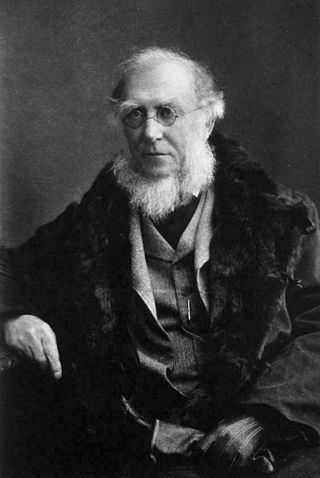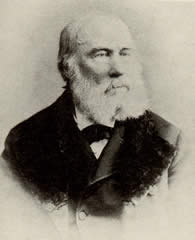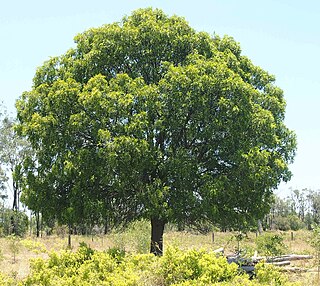
Hooker's Journal of Botany and Kew Garden Miscellany was a scientific journal edited by Sir William Hooker that was published in nine volumes between 1849 and 1857.

Hooker's Journal of Botany and Kew Garden Miscellany was a scientific journal edited by Sir William Hooker that was published in nine volumes between 1849 and 1857.

Sir Joseph Dalton Hooker was a British botanist and explorer in the 19th century. He was a founder of geographical botany and Charles Darwin's closest friend. For 20 years he served as director of the Royal Botanical Gardens, Kew, succeeding his father, William Jackson Hooker, and was awarded the highest honours of British science.

Walter Hood Fitch was a botanical illustrator, born in Glasgow, Scotland, who executed some 10,000 drawings for various publications. His work in colour lithograph, including 2700 illustrations for Curtis's Botanical Magazine, produced up to 200 plates per year.

Petalostigma is a genus of plants under the family Picrodendraceae and the monogeneric subtribe Petalostigmatinae, first defined by von Mueller in 1857. It is native to New Guinea and Australia. They are evergreen, dioecious shrubs or trees.
Matteo Botteri, also known as Matija Botteri, was a botanist, ornithologist, and collector.

Owenia is a genus of plants, mainly trees in the family Meliaceae. They are dioecious, with male and female flowers on separate plants. They are endemic to Australia and fairly widespread across the continent. There are five species in the genus, living in conditions ranging from wet rainforest to the verges of the desert.
Banksia tortifolia is a small, spreading, prostrate shrub that is endemic to the southwest of Western Australia. It has short underground stems, pinnatipartite leaves with sharply-pointed, linear lobes on each side, greenish-cream, yellow and pink flowers in heads of about eighty, and glabrous, egg-shaped follicles.
Botanical Miscellany was a short-lived botany magazine edited by William Jackson Hooker. Only three volumes appeared, in 1830, 1831 and 1833.
Diodontium is a genus of flowering plants in the daisy family.

Blennospora is a genus of flowering plants in the aster family, Asteraceae. There are three species, all endemic to Australia. The genus was first described by Asa Gray in 1851, with the generic name from the Greek, βλέννη (mucus), and σπόρων (seed)
"allud(ing) to the cellular pellicle of the achaenium becoming gelatinous when moistened, as in Cephalosoriis phyllocepkalus, but even more strikingly. This pellicle consists of a close coating of linear or subclavate diaphanous cells, compactly arranged with their long diameter perpendicular to the smooth brown pericarp: on the application of water it promptly swells into a mass of transparent jelly, very much thicker than the enclosed achsenium. The gorged mucous cells remain unbroken for a considerable time, and their extremely delicate walls show no markings, nor any contained coiled bands or fibres."
Coleocoma is a genus of flowering plants in the family Asteraceae.
George Gardner was a Scottish biologist mainly interested in botany.

Dacryopinax elegans is a species of jelly fungus in the family Dacrymycetaceae. It was originally formally described as Guepinia elegans by Miles Berkeley and Moses Ashley Curtis in 1849. George Willard Martin transferred it to the genus Dacryopinax in 1948.
Milligania is a genus of plants. It contains 5 currently recognized species, all native to Tasmania:

Homalocalyx is a genus of shrubs in the family Myrtaceae described as a genus in 1857. The entire genus is endemic to Australia.

Gastrolobium leakeanum, commonly known as the mountain pea, is a plant in the pea family Fabaceae that is endemic to a small area in the south-west of Western Australia. It is an erect or sprawling shrub to about 2 m high, with red to orange or yellow flowers in spring.

The Flora Antarctica, or formally and correctly The Botany of the Antarctic Voyage of H.M. Discovery Ships Erebus and Terror in the years 1839–1843, under the Command of Captain Sir James Clark Ross, is a description of the many plants discovered on the Ross expedition, which visited islands off the coast of the Antarctic continent, with a summary of the expedition itself, written by the British botanist Joseph Dalton Hooker and published in parts between 1844 and 1859 by Reeve Brothers in London. Hooker sailed on HMS Erebus as assistant surgeon.
Cannabis in Sierra Leone is illegal, but is widely cultivated and consumed in the country, and exported to neighboring countries and to Europe. Cannabis is known locally as diamba.

Pimelea ammocharis is a species of small shrub in the family Thymelaeaceae. It is a small shrub with white-yellow to orange flowers and is endemic to Western Australia.

Flindersia dissosperma, commonly known as scrub leopardwood, is a species of small tree in the family Rutaceae and is endemic to eastern-central Queensland. It usually has pinnate leaves with between three and five elliptical to egg-shaped leaves, panicles of white to cream-coloured flowers and fruit studded with rough points.